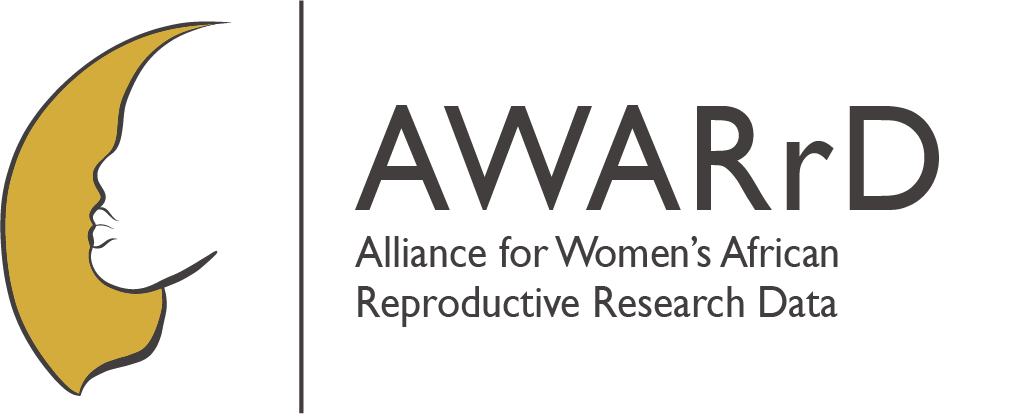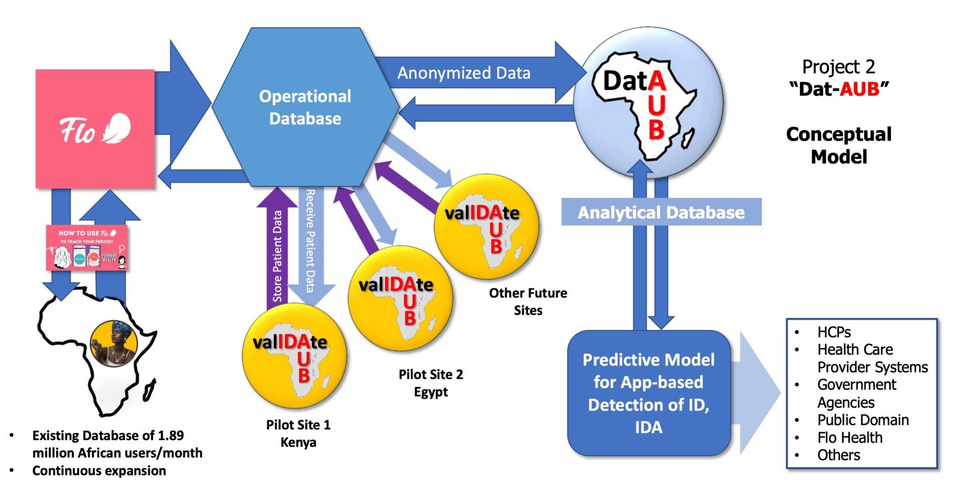The symbol “DatAUB” reflects the concept of “AUB-Data” - the notion that capturing information (data) about Abnormal Uterine Bleeding (AUB) is important to women in the reproductive years. This project is designed to address an issue experienced by reproductive aged girls and females worldwide through the lens of the African woman, who. if experiencing the symptom of heavy menstrual bleeding (HMB) may very well also have iron deficiency(ID) or, in the extreme, iron deficiency anemia (IDA). The DatAUB project is designed to use the large volumes of data acquired by a free application, Flo, to facilitate the identification of girls and women with ID and IDA by evaluating features of their menstrual bleeding. Such an approach can also allow girls and women to self-identify their risk for ID and IDA and allow them to seen medical assistance for their symptoms. Already, without the DatAUB Project, there are 3 million African women who have registered with Flo from 45 countries.
To validate the utility of the application for this task we will perform pilot studies in two African populations - the val-IDA-te studies. The data from these studies can then be applied to the Africa wide Flo database to identify girls and women with HMB symptoms. We also want to determine if this self-identification can, with appropriate investigation and therapy in an African environment, lead to a measurable improvement in HMB and quality of live symptoms, and, if pregnancy ensues, to a hemoglobin level in early pregnancy that is higher than that experienced by individuals who are not part of the program.TTTh
There are a number of potential benefits to this project should the Flo app prove to be useful at identifying individuals with ID and IDA. First of all, this method will allow individuals the ability to self identify as being at increased risk for ID and IDA. Such information could allow girls and women to validate their abnormal menstrual experience and to facilitate their approach to properly informed and capable health care providers and provider systems. After evaluation of both the heavy menstrual bleeding symptoms and the blood parameters - hemoglobin and ferritin - appropriate interventions could be simultaneously applied for both clinical conditions Early detection of ID could also reduce the need for emergency care and for surgery such as hysterectomy that has associated costs and risks. While the data are anonymized for purposes of DatAUB, data science may allow for more refined identification of women at risk in a way that could help Flo feet back to individuals, or for health care provider systems, including governments to identify problem areas and to track population-based interventions designed to address these important clinical issues. Collectively, not only should the results of DatAUB allow for interventions that improve quality of life and work productivity, they may well help those who conceive to enter pregnancy with better hematological health, a circumstance that may well reduce pregnancy-related risks to both the mother and the fetus.










